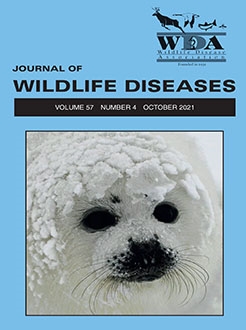Honeybees are crucial pollinators with significant ecologic value. The decline of wild honeybee populations has been recognized and documented during recent decades. However, the health status of wild non-cave Apis spp., including giant and dwarf honeybees, remains generally unknown. We investigated eight common viruses and five bacterial or fungal pathogens in four wild non-cave honeybee species at 11 locations in Southwest China. As a result, Melissococcus plutonius, the pathogenic agent of European foulbrood, was detected in all the species, and the sequences were identical to the pathogen in managed cave honeybees. Only one virus, black queen cell virus (BQCV), was positive in one dwarf species, Apis florea, in our study. The positive BQCV infected three A. florea colonies in Guangxi Province, with distinct sequences from this virus reported in cave honeybees or in the same host in the nearby Yunnan Province. Although our results indicated a low pathogenic level of common diseases in the wild non-cave Apis spp. in Southwest China, the conservation of these wild pollinators is of importance in light of the noticeable decline in populations and the irreplaceable position of pollination.
How to translate text using browser tools
11 October 2021
A Survey of Common Pathogens of Apis spp. in Wild Non-Cave Honeybees in Southwest China
Zheguang Lin,
Luan Zhao,
Lianfei Cao,
Hao Xu,
Chunhui Miao,
Haoliang Jie,
Zuyun Zhang,
Yibing Liu,
Nan Zhang,
Fuchao Gao,
Zhi Wang,
Guohong Chen,
Ting Ji
ACCESS THE FULL ARTICLE

Journal of Wildlife Diseases
Vol. 57 • No. 4
October 2021
Vol. 57 • No. 4
October 2021
Apis spp.
pathogen
virus
wild pollinator




